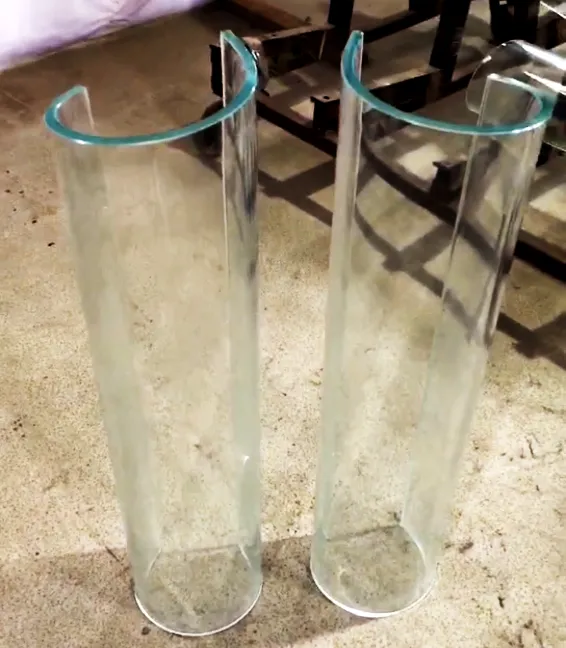Nov . 11, 2024 12:05 Back to list
what is laminated glass
What is Laminated Glass?
Laminated glass is a type of safety glass that consists of two or more layers of glass that are bonded together by a transparent interlayer, typically made of polyvinyl butyral (PVB). This innovative construction not only offers improved safety and security but also enhances sound insulation and provides ultraviolet (UV) protection. As a versatile material, laminated glass is widely used in various applications, including windows, doors, skylights, and automobile windshields.
Composition of Laminated Glass
The primary components of laminated glass include the glass layers and the interlayer. The glass used can be either float glass, tempered glass, or even tinted glass, depending on the desired aesthetic and functional properties. The interlayer, usually around 0.76 mm thick, is crucial to the performance of laminated glass. This interlayer holds the glass layers together, preventing them from shattering upon impact. If broken, the glass fragments adhere to the interlayer, reducing the risk of injury from sharp shards.
Safety Features
One of the standout features of laminated glass is its safety attributes. The interlayer significantly enhances the glass's impact resistance, making it a popular choice for applications where human safety is a concern, such as in buildings, schools, and vehicles. In the event of an accident, the glass does not shatter like standard glass. Instead, it remains intact, providing a protective barrier against entry and minimizing the risk of injury.
In addition to safety from impacts, laminated glass also offers protection against forced entry. This is why it is frequently used in commercial establishments, banks, and high-security areas. By providing a robust barrier against intruders, laminated glass plays a vital role in enhancing security.
Acoustic Insulation
Laminated glass is also known for its sound-dampening properties. The interlayer absorbs sound waves, making it an effective choice for buildings located in noisy environments, such as near highways or airports. Residential properties, offices, and hotels often utilize laminated glass in their windows to create a more peaceful and comfortable atmosphere. By using this type of glass, the transmission of external noise can be significantly reduced, improving the quality of life for occupants.
what is laminated glass

UV Protection
In addition to its safety and acoustic benefits, laminated glass offers superior UV protection, effectively blocking up to 99% of harmful ultraviolet rays. This feature is especially important for preserving interior furnishings, flooring, and artwork from fading due to sunlight exposure. Commercial spaces such as galleries and shops often rely on laminated glass to protect their displays and merchandise while ensuring a bright, inviting atmosphere.
Aesthetic Versatility
Laminated glass is available in a variety of colors, tints, and finishes, allowing architects and designers to create visually appealing structures while maintaining the functional benefits of safety and security. Its ability to be customized makes it a popular choice for a range of architectural styles, from contemporary to traditional. Moreover, laminated glass can be engineered to meet specific design parameters, enabling it to fulfill both aesthetic and performance requirements.
Environmental Considerations
From an environmental standpoint, laminated glass is often perceived as a sustainable option. It contributes to energy efficiency by reducing the need for artificial lighting, thereby lowering energy consumption. Additionally, many manufacturers are adopting eco-friendly practices in the production of laminated glass, using recyclable materials and reducing waste.
Conclusion
In summary, laminated glass is an advanced building material that combines safety, security, acoustic insulation, UV protection, and aesthetic appeal. Its unique composition and versatile applications make it an essential choice for modern architecture and design. Whether used in residential or commercial environments, laminated glass provides durability and peace of mind, making it a preferred option for anyone looking to enhance both the functionality and beauty of their spaces. As technology and design continue to evolve, the role of laminated glass in construction and manufacturing is expected to grow, cementing its place as a staple in contemporary architecture.
-
Safety and Style with Premium Laminated Glass Solutions
NewsJun.24,2025
-
Reinvents Security with Premium Wired Glass
NewsJun.24,2025
-
Premium Float Glass Line for Modern Architecture
NewsJun.24,2025
-
Low Emissivity Glass for Energy-Efficient Architecture
NewsJun.24,2025
-
High-Performance Insulated Glass Solutions for Modern Architecture
NewsJun.24,2025
-
Elevates Interior Style with Premium Silver Mirror
NewsJun.24,2025
Related PRODUCTS














